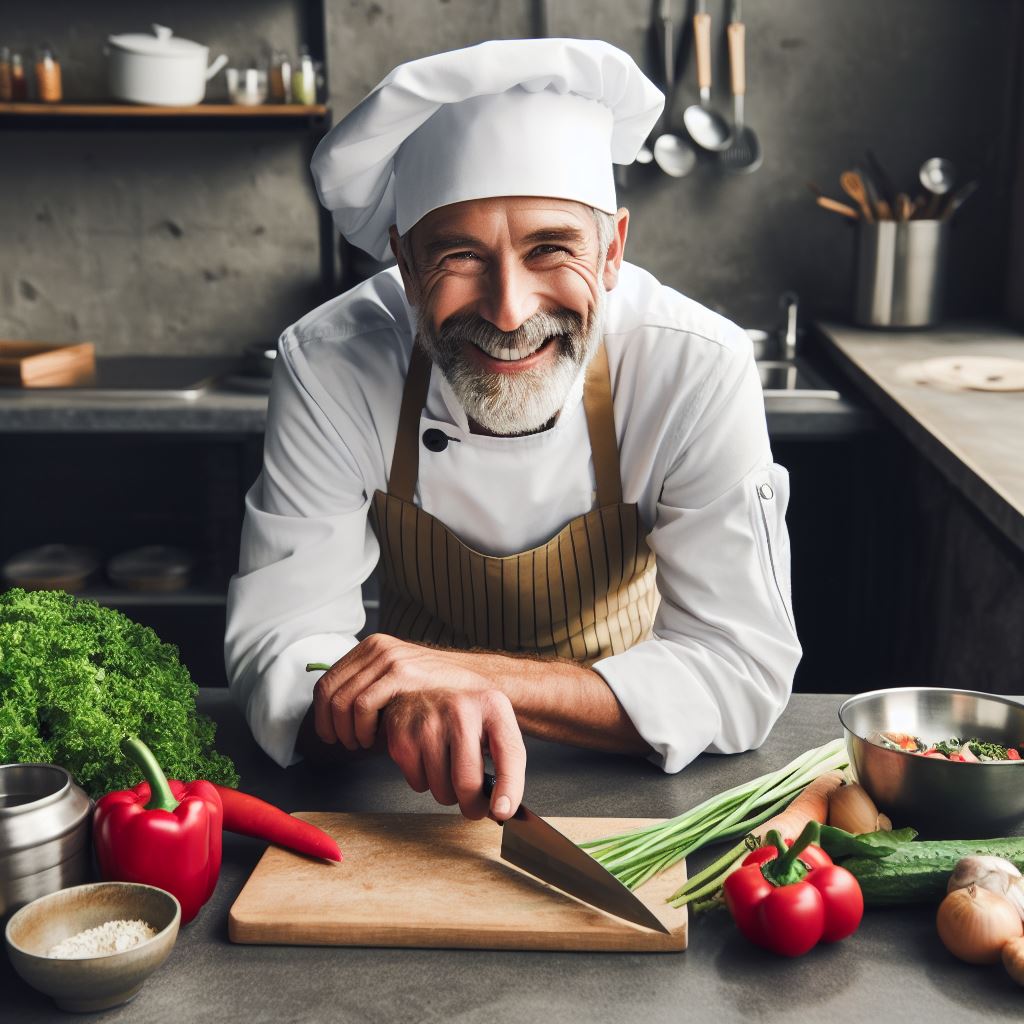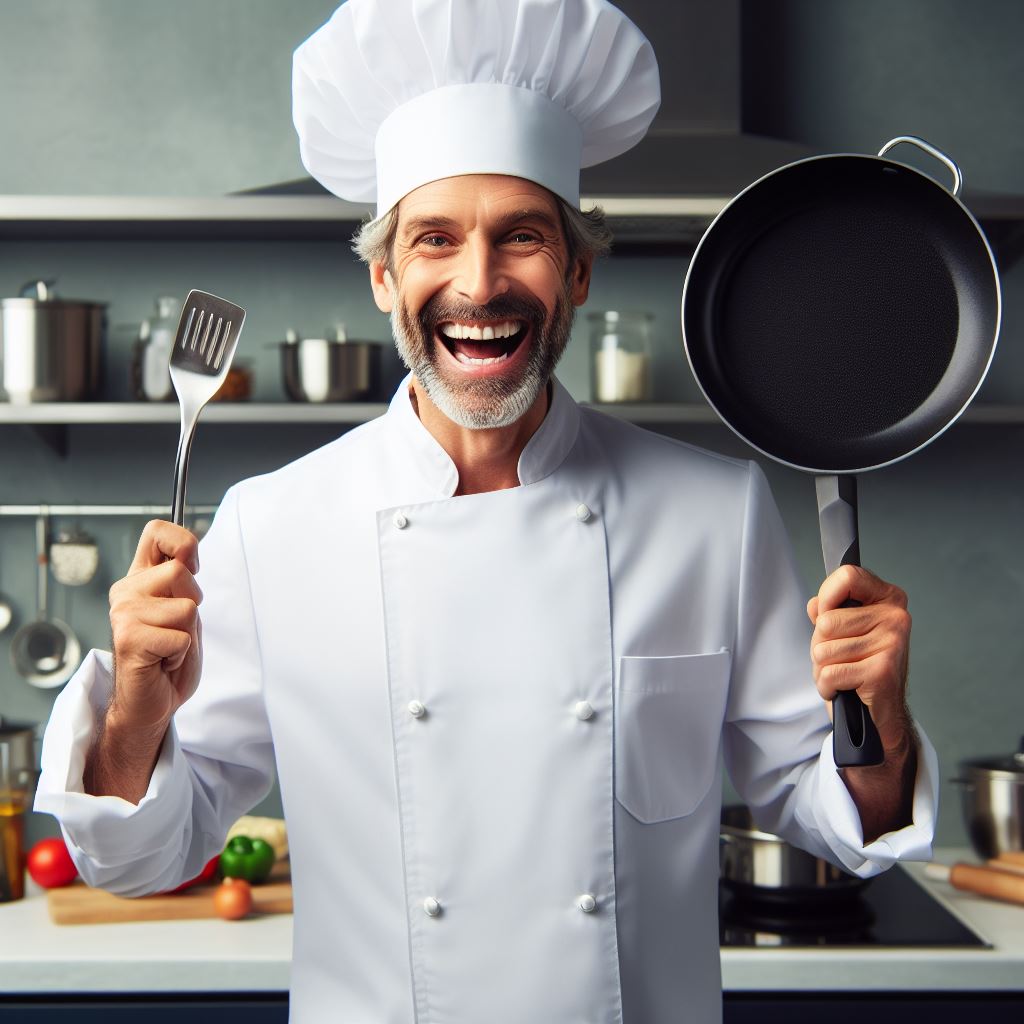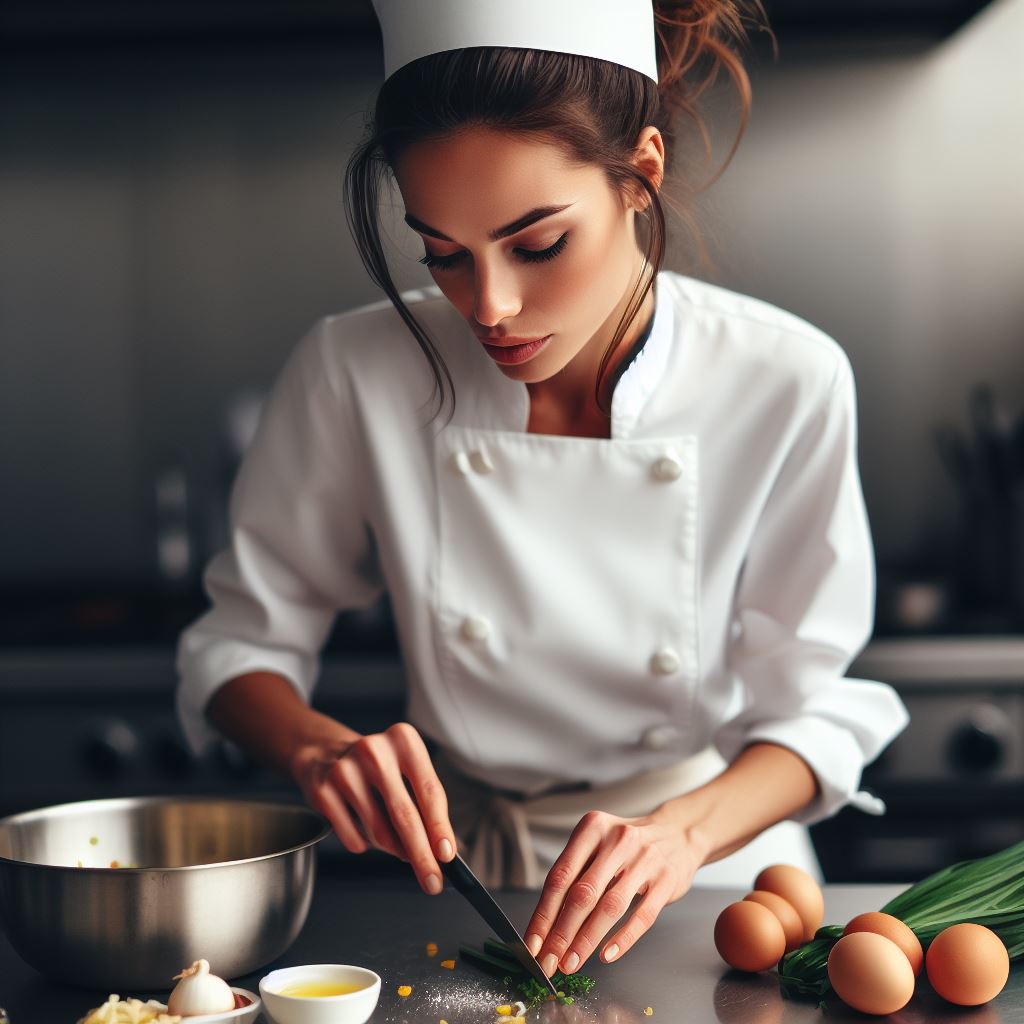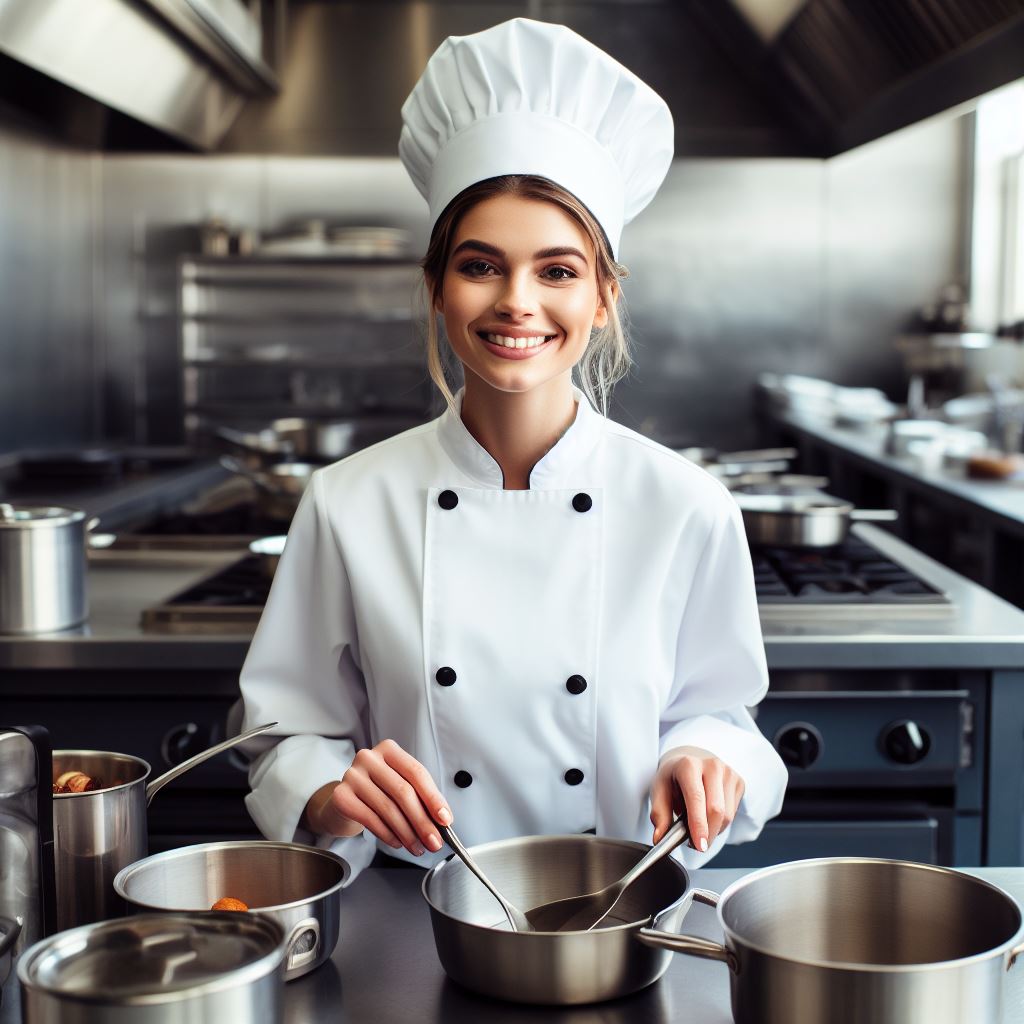Introduction
The future of cheffing in the US is being shaped by technology, which plays a crucial role in various aspects of society.
Technology has made significant advancements in recent years, transforming the way we live, work, and even eat.
In the culinary world, technology has become an integral part of the kitchen, revolutionizing the way chefs prepare and present food.
How technology is shaping the future of cheffing in the US
Technology has brought about a wide range of innovations that have greatly improved efficiency and precision in the culinary field.
Chefs now have access to cutting-edge kitchen appliances and tools that enable them to create culinary masterpieces with ease.
From high-tech sous vide machines to precision temperature control ovens, these advancements have revolutionized the way food is cooked.
Moreover, technology has also transformed the way chefs interact with their customers.
Online platforms and mobile applications have made it easier for customers to make reservations, order food, and even provide feedback.
This allows chefs to tailor their offerings according to customer preferences and provide a more personalized dining experience.
Additionally, technology has enabled chefs to explore new avenues of creativity.
Virtual reality and 3D printing have opened up endless possibilities for chefs to experiment with innovative presentations and flavors.
Chefs can now design intricate edible art pieces and create unique dining experiences that were previously unimaginable.
Basically, technology is playing a vital role in shaping the future of cheffing in the US.
From enhancing efficiency in the kitchen to improving customer experiences and fostering creativity, technology has revolutionized the culinary industry.
As technology continues to advance, we can expect even more exciting developments in the field of cheffing, further revolutionizing the way we eat and experience food.
The Impact of Technology on Cheffing
Technology revolutionized the culinary industry, introducing cutting-edge tools and techniques. Modern kitchen gadgets enhanced efficiency.
Chefs gained access to advanced equipment like sous vide machines, induction cooktops, and precision scales, boosting precision and accuracy in ingredient measurement.
Kitchen gadgets enabled consistent recipe replication. Technology expanded creativity and innovation, with chefs experimenting using molecular gastronomy tools.
Specialized software and apps assisted in recipe development and menu planning.
Advanced kitchen automation systems streamlined operations, allowing chefs to focus on culinary expertise.
Robotic machines handled repetitive tasks, reducing labor-intensive work. Efficient inventory management minimized food waste.
Technology facilitated chef connections and idea sharing through online platforms and social media. Chefs learned from each other, collaborated, and gained inspiration from diverse cuisines.
Food delivery platforms expanded restaurant reach. Online reservations and booking apps improved restaurant operations. Technology preserved and shared traditional recipes and culinary knowledge.
Technology made the culinary industry accessible to home cooks. Smart ovens and instant pots enabled convenient cooking. Online tutorials improved culinary skills.
Overall, technology profoundly impacted the culinary industry by enhancing efficiency, precision, and creativity. It fostered connectivity and opened new possibilities for chefs.
- Technology revolutionized the culinary industry.
- Modern kitchen gadgets improved efficiency.
- Advanced equipment enhanced precision and accuracy.
- Gadgets enabled consistent recipe replication.
- Creativity expanded with molecular gastronomy tools.
- Specialized software and apps aided recipe development.
- Automation streamlined kitchen operations.
- Robotic machines handled repetitive tasks.
- Efficient inventory management reduced food waste.
- Connectivity and idea sharing improved.
- Food delivery platforms broadened restaurant reach.
- Online booking apps enhanced operations.
- Technology preserved and shared traditional recipes.
- The culinary industry became accessible to home cooks.
- Online tutorials improved culinary skills.
The future of cheffing will further intertwine with technological advancements, driving growth in the culinary world.
Automation in US Kitchens
In recent years, the use of automation technology in professional kitchens has been on the rise.
Chefs and restaurant owners have increasingly embraced the benefits that automation brings to their cooking processes.
However, this rise in automation has also raised concerns about job displacement for chefs and the potential drawbacks of relying on machines for culinary tasks.
Current Use of Automation Technology
- Automated cooking processes are already being utilized in many professional kitchens across the United States.
- Robotic arms and automated machines are capable of performing repetitive tasks such as chopping, stirring, and plating.
- Automation technology is also being employed in the baking industry, where automated ovens and mixers are used.
The Advantages of Automated Cooking Processes
- Automation technology increases efficiency and productivity in the kitchen by streamlining repetitive tasks.
- Chefs can save time and focus on more creative aspects of their cooking, leading to enhanced culinary innovation.
- Consistency in taste and presentation is achievable with automated processes, ensuring customer satisfaction.
- Automation reduces the risk of human error, improving food safety and reducing waste.
Potential Drawbacks of Automation
- The reliance on machines may result in a loss of the human touch and emotional connection that is often associated with food.
- The craftsmanship and artistry of traditional cooking techniques could be overshadowed by automation.
- Some consumers may perceive food prepared by machines as impersonal and lacking the same level of care.
- Initial investments in automation technology can be costly, limiting accessibility for smaller businesses.
Addressing Concerns about Job Displacement
- The increased use of automation technology does raise concerns about job displacement for chefs.
- However, it is important to remember that automation cannot entirely replace human creativity and expertise in the kitchen.
- Cooks and chefs will still be essential for recipe development, menu planning, and adding the finishing touches to dishes.
- With the introduction of automation, chefs can focus on higher-skilled tasks that require human ingenuity.
In essence, automation technology is revolutionizing the culinary world, bringing both advantages and potential drawbacks.
While automation enhances efficiency and consistency in professional kitchens, it also poses challenges related to the loss of human touch.
Concerns about job displacement should be acknowledged, but the role of chefs will always remain significant in creating unique and exceptional dining experiences.
As technology continues to advance, it is crucial to strike a balance between automation and the irreplaceable creativity of human chefs.
Read: Famous American Chefs: Their Stories, Struggles, & Successes
Kitchen Gadgets and Smart Appliances
The popularity of kitchen gadgets and smart appliances among home cooks
- Kitchen gadgets and smart appliances have gained tremendous popularity among home cooks.
- These technologies offer convenience, efficiency, and enhanced cooking experiences for users.
- Home cooks appreciate the time-saving capabilities and ease of use provided by these gadgets.
- Smart appliances, such as refrigerators with built-in touchscreens, bring a touch of innovation to modern kitchens.
- Smart gadgets, like voice-controlled assistants, enable hands-free operation and assist users with recipes.
Utilizing these technologies in professional kitchens
- It’s not just home cooks who benefit from kitchen gadgets and smart appliances.
- Professional kitchens also embrace technological advancements to streamline their operations.
- Chefs can rely on smart ovens and stovetops that offer precise temperature control for consistent cooking results.
- High-tech food processors and blenders allow chefs to achieve finer textures and perfect emulsions.
- Smart sous vide machines help maintain accurate temperatures during the cooking process.
Innovative gadgets and appliances that improve cooking techniques
- Several innovative gadgets and appliances have revolutionized traditional cooking techniques.
- The immersion circulator, a sous vide gadget, guarantees precise and even cooking of ingredients.
- Induction cooktops provide responsive heat control and eliminate wasted energy.
- Air fryers replicate the crispy texture of fried food with minimal oil usage, promoting healthier cooking options.
- Smart scales that connect to recipes and provide real-time measurements ensure accurate ingredient proportions.
Therefore, kitchen gadgets and smart appliances have become immensely popular among home cooks and professionals alike.
These technologies offer convenience, efficiency, and improved cooking outcomes. Home cooks appreciate the convenience and time-saving capabilities provided by smart appliances and gadgets.
Professional chefs benefit from precise temperature control and streamlined operations in their kitchens.
Innovative gadgets like immersion circulators and air fryers have revolutionized traditional cooking techniques.
As technology continues to advance, the future of cheffing will increasingly rely on these smart and innovative kitchen tools.
Read: The Michelin Star: Its Impact on a Chef‘s Career in the USA
Data and Analytics for Cheffing
In today’s culinary landscape, data and analytics play a significant role in shaping the future of cheffing.
Chefs are increasingly turning to data-driven insights to inform their menu creation, ingredient sourcing, and customer preferences.
However, there are also ethical concerns associated with data collection and analysis in the culinary world that need to be addressed.
The Role of Data and Analytics in Contemporary Cooking
Data and analytics have revolutionized the way chefs approach cooking. By leveraging the power of data, chefs can gain valuable insights into trends, customer preferences, and ingredient availability.
This information allows them to make informed decisions and create menus that cater to the ever-changing demands of their diners.
Transform Your Career Today
Unlock a personalized career strategy that drives real results. Get tailored advice and a roadmap designed just for you.
Start NowWith the help of data, chefs can identify popular ingredients, flavors, and cooking techniques.
By analyzing customer feedback and online reviews, chefs can understand which dishes resonate with their audience and which ones need improvement.
This enables them to refine their culinary skills and adapt their menus accordingly, ultimately enhancing customer satisfaction.
Using Data to Inform Menu Creation, Ingredient Sourcing, and Customer Preferences
Data plays a crucial role in menu creation, ingredient sourcing, and understanding customer preferences. Chefs can analyze data to identify seasonality trends and adapt their menus accordingly.
By incorporating ingredients that are fresh and readily available, chefs can ensure the highest quality dishes for their customers.
Data analysis also helps chefs understand customer preferences on a more granular level.
From tracking popular dishes to monitoring dietary restrictions and food allergies, chefs can use data to create personalized experiences for their diners.
This ensures that customers feel valued and encourages repeat visits.
Additionally, data can inform chefs about ingredient sourcing. By tracking the origin and quality of ingredients, chefs can prioritize local and sustainable options.
Data-driven decision-making in ingredient sourcing promotes environmental consciousness and fosters a more sustainable culinary industry.
Addressing Ethical Concerns related to Data Collection and Analysis
While data and analytics have their benefits, there are ethical concerns that must be considered in the culinary world.
The collection and analysis of data raise questions about privacy, consent, and potential misuse of personal information.
Chefs need to ensure that the data they collect is done so ethically and with the proper consent from their customers.
Transparency in data collection practices is crucial to building trust with diners and maintaining a positive reputation in the industry.
Furthermore, chefs must be cautious about the potential misuse of customer data. It is essential to use data solely for the purpose of improving culinary experiences and not for invasive or unethical practices.
Safeguarding customer information and adhering to ethical guidelines should be a top priority for chefs and those involved in data analysis in the culinary field.
Data and analytics have become indispensable tools for chefs in the modern culinary landscape.
By harnessing the power of data, chefs can create menus that cater to customer preferences, source sustainable ingredients, and stay ahead of culinary trends.
However, it is crucial to address the ethical concerns associated with data collection and analysis.
With transparent practices and a commitment to responsible data usage, chefs can continue to leverage data to enhance their craft and provide exceptional dining experiences.
Read: Gender & Diversity: Changing Dynamics in the US Kitchens
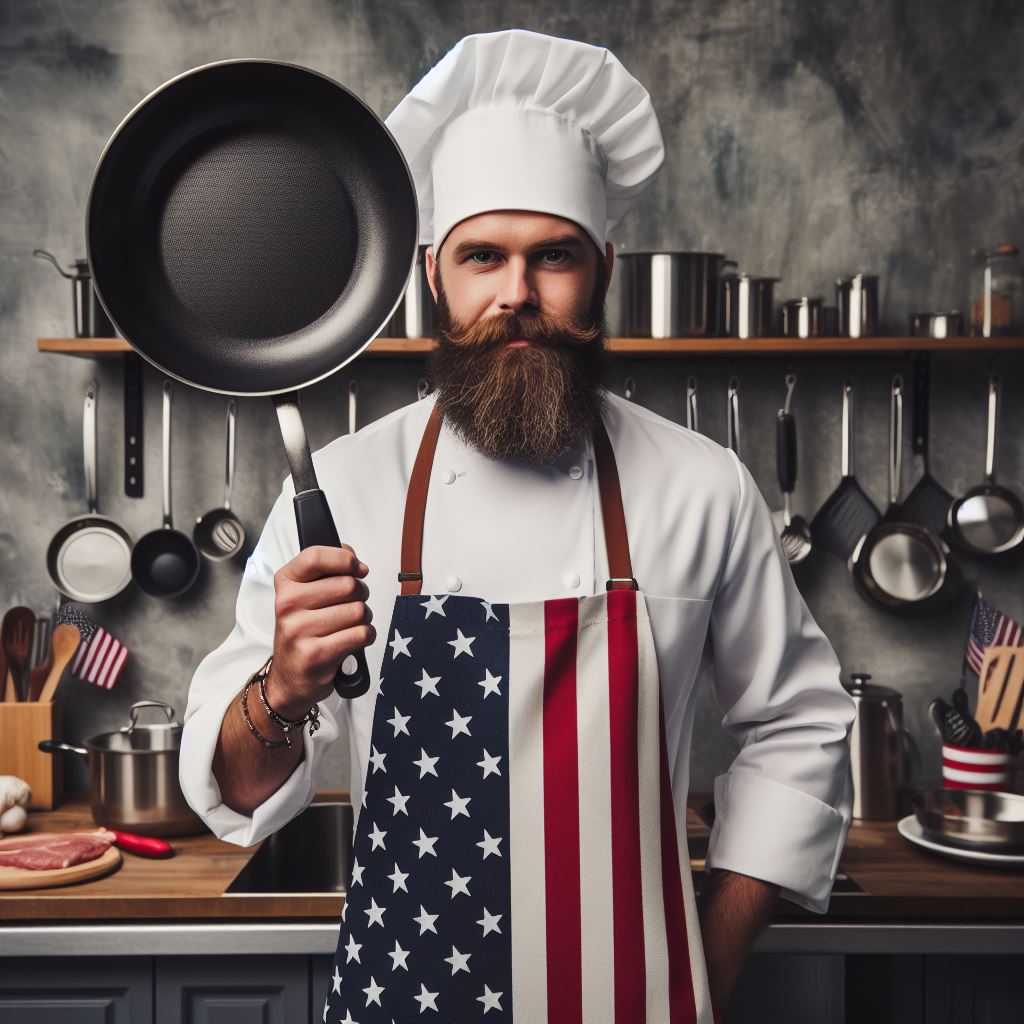
The Rise of Virtual Cooking Assistants
The emergence of virtual cooking assistants and AI-powered recipe recommendations
In recent years, the culinary world has witnessed the emergence of virtual cooking assistants and AI-powered recipe recommendations.
These innovative technologies have the potential to revolutionize the way we cook and create in the kitchen.
How these assistants can enhance productivity and creativity in culinary settings
Virtual cooking assistants, such as smart kitchen devices and virtual recipe guides, are designed to provide step-by-step instructions and guidance throughout the cooking process.
Powered by artificial intelligence, these assistants can analyze and understand user preferences to offer personalized recommendations and suggestions.
One of the key advantages of virtual cooking assistants is their ability to enhance productivity in culinary settings.
By eliminating the need for constant reference to cookbooks or online recipes, these assistants streamline the cooking process and save valuable time.
Cooks can simply follow the instructions provided by the virtual assistant without interruptions, allowing them to focus on their techniques and flavors.
Moreover, these AI-powered assistants can also foster creativity in the kitchen.
By suggesting alternative ingredients or flavor combinations, they encourage experimentation and push chefs to explore new culinary horizons.
With access to a vast database of recipes and cooking techniques, chefs can easily discover new inspirations and bring diversity to their menus.
The limitations and potential challenges of relying on AI in the kitchen
However, it is important to acknowledge the limitations and potential challenges of relying solely on AI in the kitchen.
While virtual cooking assistants offer convenience and efficiency, they may lack the human touch and intuition that experienced chefs bring to their craft.
Cooking is an art that encompasses not only precise measurements and instructions but also the ability to adapt, improvise, and innovate.
Furthermore, virtual cooking assistants may struggle with real-time problem-solving and adaptability.
They rely on pre-programmed algorithms and data sets, which might not always account for unique circumstances or unexpected situations that can arise in a bustling kitchen environment.
Chefs must still possess the skills and expertise to handle these unforeseen challenges and ensure a smooth cooking process.
Another potential concern is the overreliance on technology and its impact on the human connection in the culinary experience.
Food has always been a medium for social interaction and bonding.
While virtual assistants may offer convenience, they cannot replicate the warmth and personal touch of sharing a meal prepared by a skilled chef or a home cook.
It is important to strike a balance between utilizing technology and preserving the essence of cooking as a human-driven activity.
In closing, the rise of virtual cooking assistants and AI-powered recipe recommendations presents exciting opportunities for the future of cheffing.
These assistants have the potential to enhance productivity and creativity in the kitchen, but they also come with limitations and challenges that should not be overlooked.
The key lies in harnessing the benefits of technology while preserving the irreplaceable skills and human touch that make the culinary world so rich and diverse.
Read: Chef Attire: Understanding the Importance of Uniforms
Gain More Insights: Top Challenges Faced by Receptionists Today
Showcase Your Business Today
Reach thousands of readers actively exploring professional services. Publish your business profile and grow your audience now.
Publish NowThe Future of Cheffing with Technology
Technology has been rapidly advancing in all aspects of our lives, including the culinary industry. As new technologies emerge, the future of cheffing is poised for a revolution.
In this section, we’ll explore technology’s future advancements transforming the culinary industry, discuss implications for chefs, and emphasize irreplaceable human touch and creativity in cooking.
Predicting Future Advancements in Technology
- Robotics: Advanced robots equipped with artificial intelligence and precise automation can revolutionize the cooking process. They can handle repetitive tasks and ensure consistent quality.
- Virtual Reality: Chefs may utilize virtual reality to experiment with virtual ingredients and create new flavor combinations without needing physical resources.
- 3D Printing: The use of 3D printing technology can enable chefs to create complex and intricate food structures that were previously impossible to achieve.
- Smart Kitchen Appliances: Kitchen appliances embedded with smart technology can enhance precision, efficiency, and safety in the cooking process.
Implications for Chefs: Upskilling and Adapting
These technological advancements bring about several implications for chefs.
While technology can streamline processes and enhance productivity, it also requires chefs to upskill and adapt to these innovations.
Some potential implications include:
- Learning curve: Chefs need to familiarize themselves with new technologies and continuously update their skills to stay relevant in a tech-driven culinary landscape.
- Collaborating with technology: Chefs must learn to collaborate with technology rather than see it as a threat. Embracing technology can enhance their creativity and efficiency.
- Focus on creativity and innovation: As technology takes over repetitive tasks, chefs can focus more on experimenting with flavors, textures, and presentation to deliver remarkable dining experiences.
- Interdisciplinary knowledge: Chefs may need to acquire interdisciplinary knowledge in fields such as data analysis, robotics, and food science to fully leverage technology’s potential.
The Irreplaceable Human Touch and Creativity
While technology can undoubtedly revolutionize cheffing, it can never replace the human touch and creativity that chefs bring to their craft.
The essence of cheffing lies in the ability to create unique and memorable dining experiences that evoke emotions and delight the senses. Some reasons why technology cannot replace the human touch include:
- Intuition and improvisation: Chefs possess an innate ability to adapt and improvise, relying on their sensory perception, experience, and instincts to create extraordinary dishes.
- Artistry and aesthetics: Chefs have an artistic vision that goes beyond functionality. They create culinary masterpieces by combining flavors, colors, and textures in visually appealing presentations.
- Emotional connection: Chefs can connect with diners on a deeper level by infusing their own passion, culture, and individuality into their dishes ‘ something that cannot be replicated by machines.
- Innovation through human ingenuity: While technology can suggest ingredient combinations, it cannot match the inventiveness and intuition of chefs in pushing culinary boundaries.
Ultimately, the future of cheffing with technology promises remarkable advancements that can revolutionize the culinary industry.
Chefs must embrace these technological innovations, upskill themselves, and adapt to the changing landscape.
However, it is crucial to remember that technology can never replace the irreplaceable human touch, artistry, and creativity that make cheffing a truly extraordinary craft.
Conclusion
All in All, this blog post explored the role of technology in the future of cheffing in the US. We established that technology has become an integral part of modern kitchen operations.
From advanced cooking appliances to AI-powered recipe platforms, technology has proved to be a valuable asset for chefs.
We discussed the various possibilities that technology can bring to the culinary industry.
It not only enhances efficiency and accuracy but also opens up new avenues for creativity and experimentation in the kitchen.
Chefs can now rely on smart ovens, precision cooking devices, and data-driven tools to elevate their culinary skills.
However, we also acknowledged the challenges that come with the integration of technology.
The fear of automation replacing human expertise and the need for chefs to adapt to digital tools are some hurdles that need to be addressed.
Striking a balance between technology and traditional culinary techniques is essential to maintain the artistry of cheffing.
As we consider the future of cheffing, it is important to embrace technology as a means to enhance our culinary experiences rather than replace them.
As technology continues to evolve, it is crucial for chefs to stay updated and incorporate the latest innovations into their practice.
In a world where technology’s presence is inevitable, we should leverage it to push the boundaries of gastronomy and create unforgettable dining experiences.
Let us embrace the collaboration between human creativity and technological advancements, ensuring that our culinary heritage thrives in the digital age.
So, whether you are a professional chef or a home cook, dare to intertwine technology with your culinary skills, and together let us shape the future of cheffing in the US.
[E-Books for Sale]
The Big Book of 500 High-Paying Jobs in America: Unlock Your Earning Potential
$19.99 • 500 High-Paying Jobs • 330 pages
Explore 500 high-paying jobs in America and learn how to boost your career, earn more, and achieve success!
See All 500 High-Paying Jobs of this E-Book
1001 Professions Without a Degree: High-Paying American Jobs You Can Start Now
$19.99 • 1001 Professions Without a Degree • 174 pages
Discover 1001 high-paying jobs without a degree! Unlock career tips, skills, and success strategies for just $19.99!

